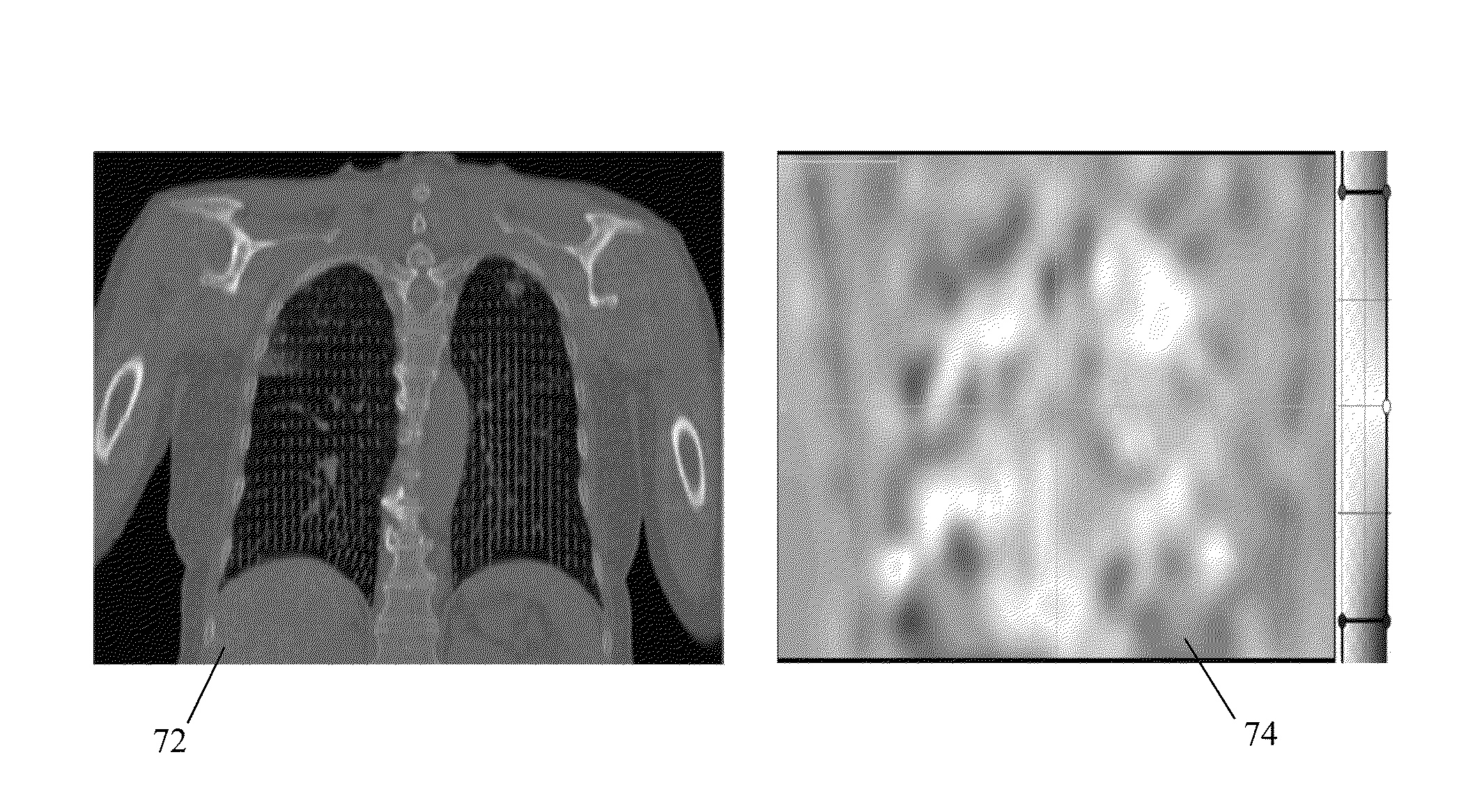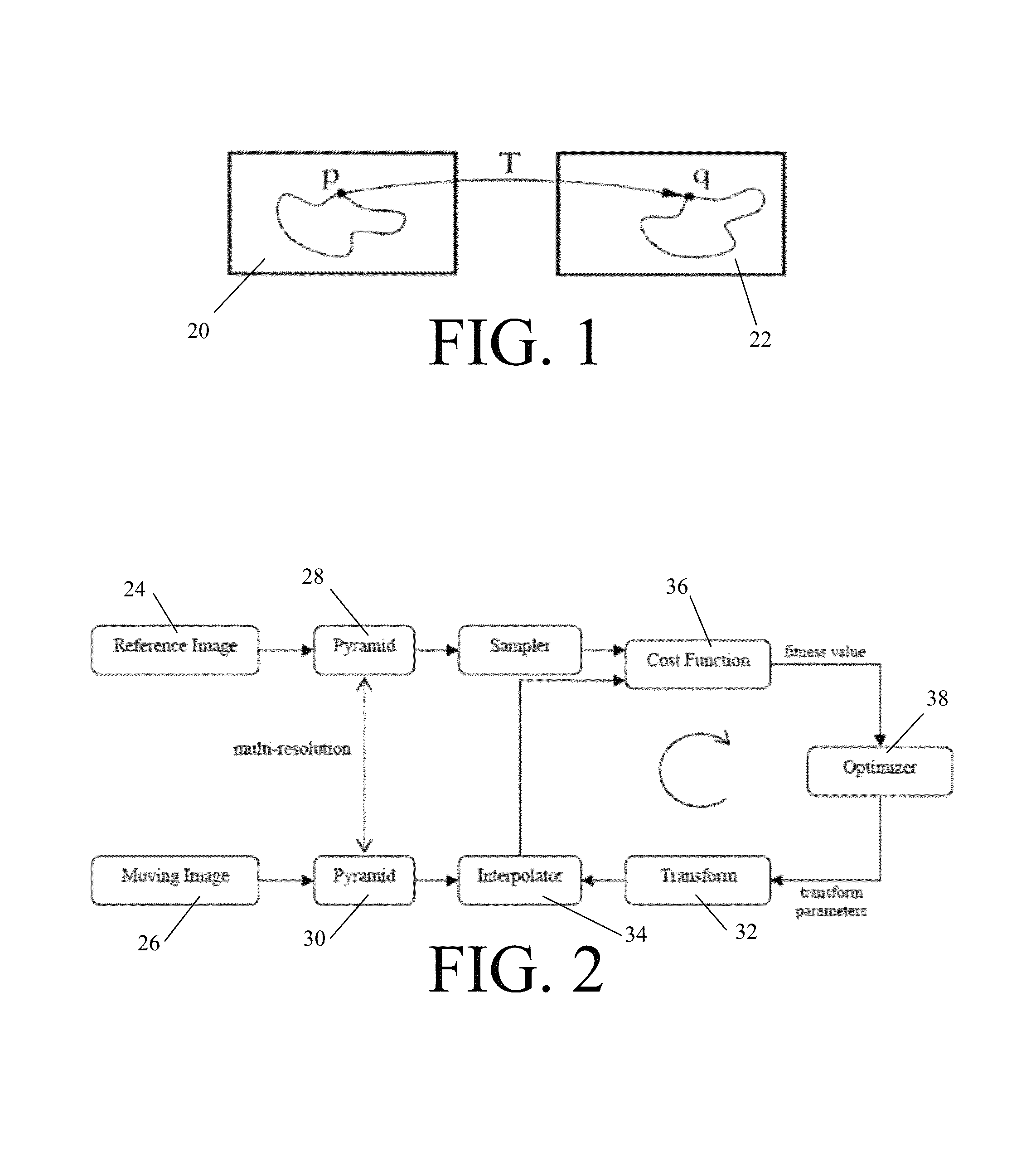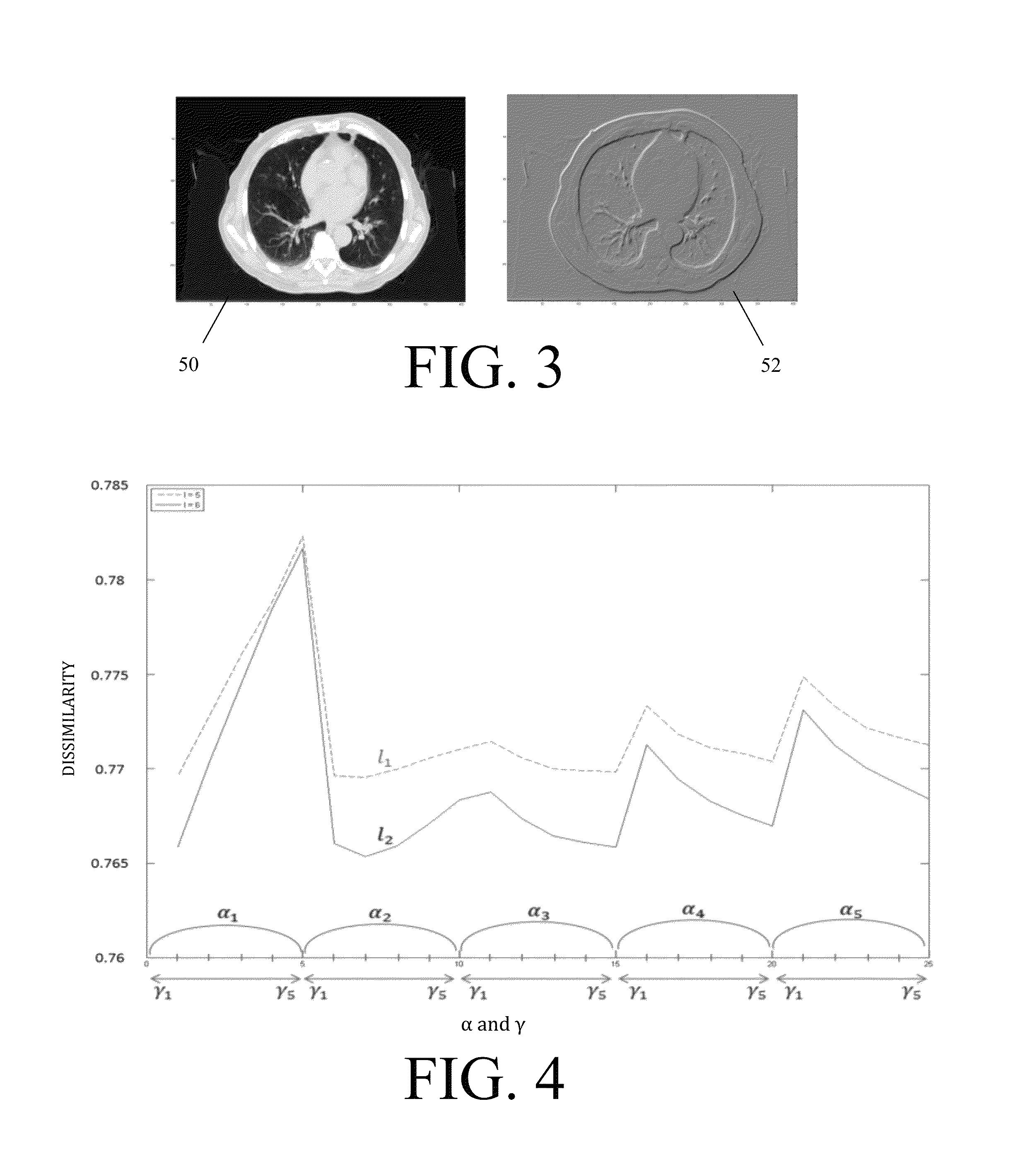Volumetric deformable registration method for thoracic 4-D computed tomography images and method of determining regional lung function
a volumetric deformation and computed tomography technology, applied in image enhancement, image analysis, instruments, etc., can solve the problems of reduced compliance, thicker and stiffer tissue, and associated mechanical changes within the lung itsel
- Summary
- Abstract
- Description
- Claims
- Application Information
AI Technical Summary
Benefits of technology
Problems solved by technology
Method used
Image
Examples
example 1
Multi-Scale Optical Flow Method Incorporating Mass Conservation for Deformable Motion Estimation
[0072]For both qualitative and quantitative evaluation of the exemplary method described herein, the publicly available POPI-model (J. Vandemeulebroucke, D. Sarrut, and P. Clarysse, “The POPI-model, a point-validated pixel-based breathing thorax model,” in International Conference on the Use of Computers in Radiation Therapy (ICCR), Toronto, Canada, 2007) and DIR-lab (R. Castillo, E. Castillo, R. Guerra et al., “A framework for evaluation of deformable image registration spatial accuracy using large landmark point sets,” Physics in medicine and biology, vol. 54, no. 7, pp. 1849-1870, 2009) data of lung deformation has been used. In the POPI-model dataset, 41 homologous landmarks were defined by experts in each of the ten respiratory phases of a single individual that make up this 4-D CT dataset with voxel dimensions 0.97×0.97×2 mm and made up of 512×512×141 voxels. For the DIR-lab data, 7...
example 2
Method of Determining Regional Lung Function
[0091]Seven patients with non-small cell lung cancer (NSCLC) who were scheduled to receive thoracic radiotherapy were enrolled in a study and imaging was performed prior to the initiation of treatment. 4-D CT data were collected with 1.17×1.17×3 mm voxel dimension using a Philips Brilliance Big Bore CT scanner and the Varian Real-time Position Management (RPM) system (Varian Medical Systems, Palo Alto, Calif.) to record patient respiratory traces in the Department of Radiation Oncology at University of Louisville. An audiovisual feedback device was utilized to ensure a reproducible and consistent respiratory cycle waveform to ensure fidelity of the 4-D CT data. For each patient, 4-D CT images of the entire thorax and upper abdomen were obtained.
[0092]Each patient also received tomographic SPECT ventilation / perfusion lung imaging on a Philips ADAC Sky-light Dual head gamma camera. For SPECT ventilation, Tc-99m DTPA was aerosolized and inhal...
PUM
 Login to View More
Login to View More Abstract
Description
Claims
Application Information
 Login to View More
Login to View More - R&D
- Intellectual Property
- Life Sciences
- Materials
- Tech Scout
- Unparalleled Data Quality
- Higher Quality Content
- 60% Fewer Hallucinations
Browse by: Latest US Patents, China's latest patents, Technical Efficacy Thesaurus, Application Domain, Technology Topic, Popular Technical Reports.
© 2025 PatSnap. All rights reserved.Legal|Privacy policy|Modern Slavery Act Transparency Statement|Sitemap|About US| Contact US: help@patsnap.com



